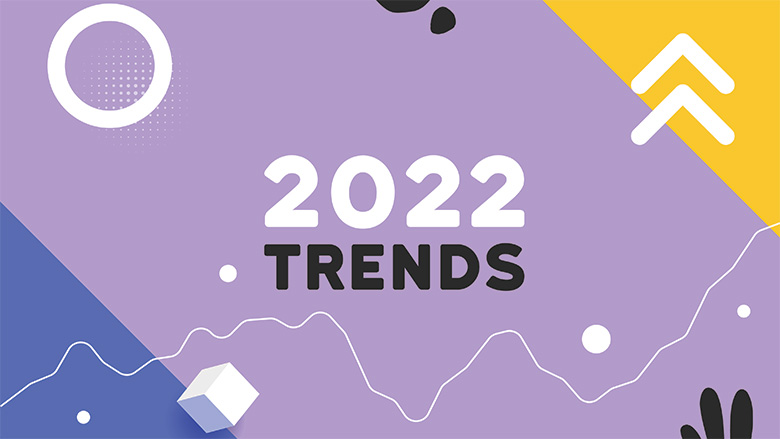Most restoration professionals have spent the last few years in a transient state, inventing new processes and policies on the fly to maintain business continuity for customers and employees alike through the global pandemic. Although the COVID-19 situation has seemed to stabilize, the economy and talent marketplace is still in flux, driving significant institutional shifts across all industries.
Back in 2016, millennials became the workforce majority. However, we are only now beginning to feel their influence — the human centricity, the concern for global impact and the appetite for continuous improvement has brought with it record-level attrition (coined "The Great Resignation"). On top of the mass turnover, the aging workforce has begun to solidify its exit plans, fueling the merger and acquisition (M&A) fire, and deepening the skills gap.
In other words, we have reached an inflection point — we can choose to evolve, carefully striking a balance between innovation and margins, or choose complacency, watching operational costs tick upward and diminish earnings. So for those looking to spark positive change across your organization, here are the headwinds that should be on your radar.
Employee Value Proposition
For the first time, we are hiring and recruiting in an "employee's market," meaning there are more open roles than job seekers, making employees more powerful and valuable than ever before. With their newfound authority, they are imposing a mandate for perks, pay and palpable developments to the employee value proposition (EVP) as a whole. In addition, they are redefining work-life balance and calling for corrective measures that combat inflation.
For restoration leaders, the thought of designing a competitive EVP can be intimidating — and at times inconceivable. We will never be the open office with ping pong tables and a beer-stocked mini-fridge, and that is OK. But, what we can be is the progressive, development-focused employer who sees each employee as an individual with unique interests and strengths rather than a cog in the wheel.
And while "trendy" perks are the most visible, research shows they are not the most impactful for retention and team morale. Instead, retention is directly correlated with personal opportunity and career advancement. According to a LinkedIn study, 94% of employees stated they would remain with their current employer if they were actively investing in their development.
Carolina Valencia, a vice president in Gartner's human resources practice, speaks to the power of learning and development in a recent article for Harvard Business Review. "Companies have been engaged in an arms race to offer the best perks,” she states. “But once basic needs are met, people are more powerfully motivated by feelings than by material features. Employees today want to be treated as people, not just workers."
“How can we make our human capital feel more like humans and less like capital?”
In other words, we should be asking ourselves: How can we make our human capital feel more like humans and less like capital?
Skills Gap
The skills gap is a phenomenon we, as an industry, cite frequently but seldomly act on. Unfortunately, in the 1990s, vocational education took a nosedive as the "college is for everyone" narrative took root, stigmatizing trades and tearing an irreparable gap in the current labor force.
Trades built on apprenticeship, shared knowledge and experience are quickly dissolving, and there is no "quick fix" in sight. According to Restoration & Remediation's 2021 State of the Industry Report, 66% of survey respondents reported that "finding skilled workers" remains their biggest challenge, while retaining employees was an issue for 45% of those polled.
Rather than continue to discuss the problem at hand, it is time we band together as an industry to design a solution. How do we make restoration an attractive field to rising talent and preserve the craft around which we have shaped our lives?
Focusing on EVP and technology-forward operations is a good start, but repairing the gap requires the support and dedication of the restoration collective.
Automation and Digitization
Lead times on many commodities remain unpredictable due to supply chain disruption and labor shortages, and material costs are inching toward all-time highs. The price of lumber sits at over $1,418 per thousand board feet, and fuel costs are up roughly 26 cents from February and nearly a dollar from this time last year.
As a result, the National Association of Home Builders reports the recent uptick in material costs has added more than $18,600 to the price of a new build. With operating costs in flux, identifying opportunities to accomplish more with less (bandwidth, headcount, resources) will play a critical role in protecting profit margins — this is where digitization comes into play.
It is no secret that restoration is a digital laggard. We have turned to digital tools only when necessary and maintained a healthy skepticism toward technology implementation. But in this climate, we cannot afford to let traditionalism stifle progress; we must adapt.
Implementing new systems to automate repetitive, manual processes will help stabilize operating costs through this ongoing period of disruption.
Industry Consolidation
What is next? Bigger, faster consolidation. Why? Look no further than all of the forces mentioned above.
While many leaders have been narrowly focused on reviving their talent acquisition strategies to overcome the "Great Resignation," another mass exodus has been brewing beneath the surface, something Forbes has coined, the "Great Retirement."
Since finding a successor is becoming more difficult (enter, skills gap), most exit plans for restoration business owners include a liquidity event of some kind. Sometimes this means selling out to private equity or joining forces with a larger, like-minded business that will carry on their legacy.
Consolidation is the natural progression of an industry; the many become the few. This was always the path for restoration, but recent events have only accelerated the process. Sellers should find a partner who shares their vision for the future — how they see their team evolving, their stance on service delivery and the future of restoration. On the flip side, buyers must think "big picture" about how each transaction influences the restoration community overall.
Takeaways
While processes may change, it is necessary to maintain a few constants. At Kustom, we know what we believe in, and that value system keeps us grounded. We believe in trust that builds. We believe in transparency. We believe in minimizing discomfort and downtime amidst disaster and restoring spaces that bring people joy.
If you view the operational challenges we face today through the lens of a company vision or purpose, a path forward will come into focus. My advice: Run toward the problem (rather than ignore), remain solution-focused, and embrace change as an opportunity to grow and learn into a better operation, business and leader.


